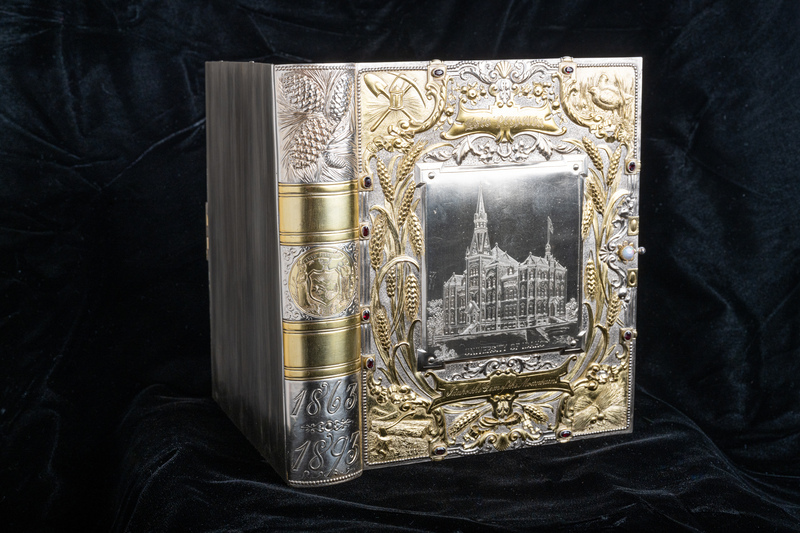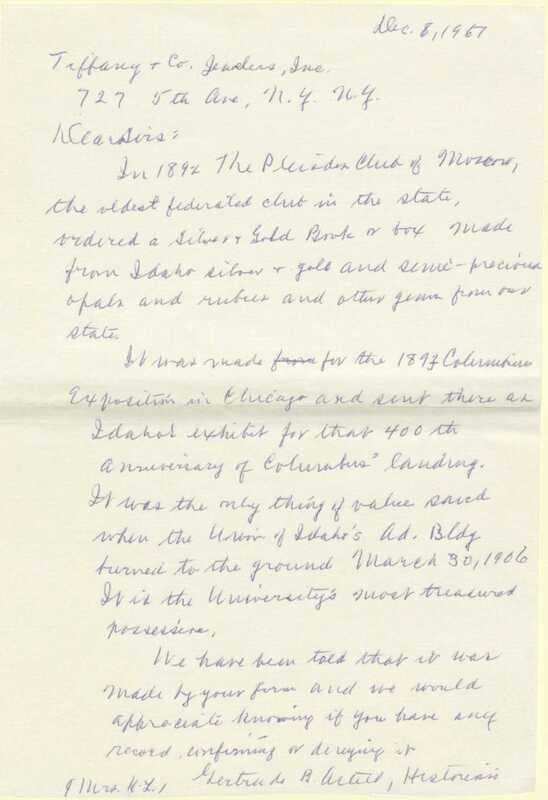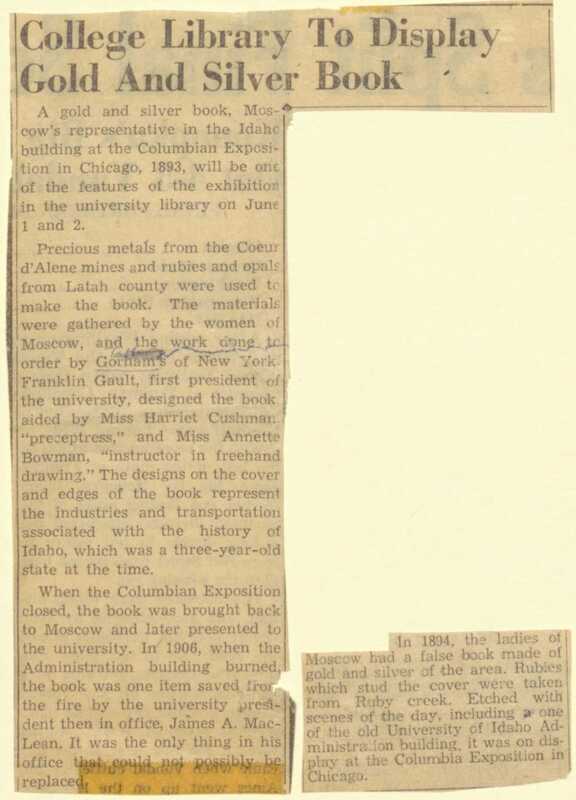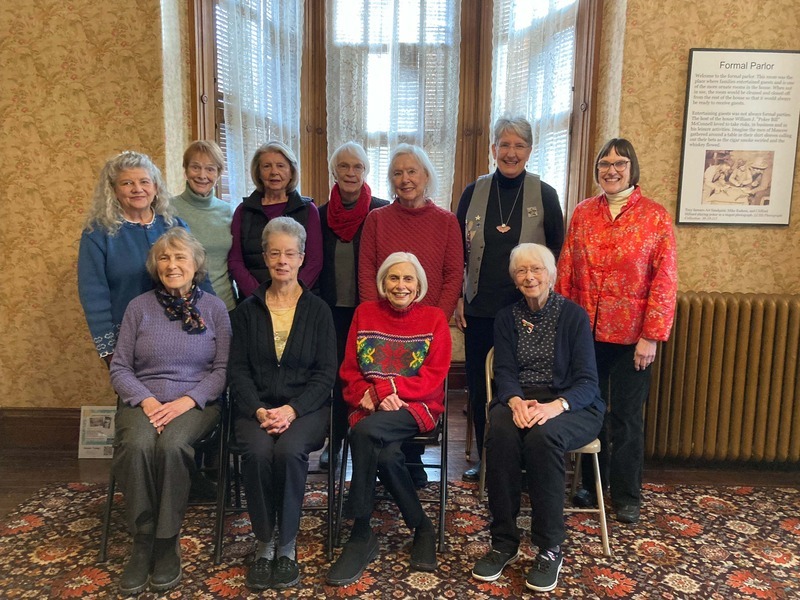Silver and Gold Book
Photographs and documentation about the Silver and Gold Book
About the Collection
There are a handful of treasures on display in the President’s Office in the Administration Building on University of Idaho’s Moscow campus. Along with many special objects like the Centennial Mace, there is a small and beautiful jewelry box glittering behind glass. Known as the Silver and Gold Book for its style and materials, the box is best appreciated when viewed from many angles. It is a precious piece of University history, however, and so opportunities to inspect the Silver and Gold Book are limited. That is why the University of Idaho Library has created this digital collection of high resolution photographs, to highlight intricate details and provide background information about a unique and important piece of U of I’s past.
The Silver and Gold Book was created to represent the community of Moscow at the World’s Columbian Exposition of 1893, intended to mark the 400th anniversary of Columbus landing in the Americas. The identities of Moscow and the University of Idaho have been interwoven from the very beginning. Moscow was incorporated in 1887 and just two years later the territorial legislature chose to locate the land-grant university there. The Silver and Gold Book not only captured the significance of the university, it also made use of materials and motifs that were central to Idaho’s economy and demographics. The silver and gold were mined from North Idaho’s Coeur d’Alene district, while the rubies and opals were sourced from mines within the region. Engravings of wagon trains and locomotives represented changes in technology that were bringing settlers to the newly formed state of Idaho.
As was the case in many communities, a group of women assumed responsibility for determining Moscow’s contribution to the World’s Columbian Exposition. Mrs. J.H. Forney, wife of U of I’s first acting president, led the local group. She delegated the task of designing a special work of art to then-president Franklin Gault, the university’s first art teacher Annette Bowman, and local jeweler R.M. Crockett. The design and raw materials were shipped to New York for manufacturing, though the final gems were added by Crockett in Moscow.
It has generally been understood that the group of organizing women was in fact the Pleiades Club, which originally consisted of seven faculty wives with a shared interest in art and literature. That the book was commissioned in 1893 and the club only officially formed in March of 1894 complicates facts somewhat. The founding members were Mrs. Jennie P. Gault, Mrs. Martha Fox, Mrs. Kate R. Henderson, Mrs. C.W. McCurdy, Mrs. Sarah Cowan Ostrander, Mrs. Ellen Roe Aldrich, and Mrs. Millicent Carter Bonebright. Mrs. Mary E. Forney became a member in 1896.
Following display at the World’s Columbian Exposition, the book was returned to Moscow and officially gifted to the University of Idaho. It was in the President’s Office in the original Administration Building on March 30th, 1906 when the structure caught fire. Rafe Gibb’s account of the fire, published in 1962’s Beacon for Mountain and Plain, is engaging and informative:
“Students pleaded for permission to enter the Library and save books, but [President] MacLean shook his head violently.‘Don’t do it!’ he shouted. ‘The chemicals - they may blow at any time.’Located in the basement, directly below the Library, was the Chemistry Department.While flames licked around them, one group of students did enter the president’s office, and came out with two items - one highly valuable, and the other not so valuable. The first was the ‘Silver and Gold Book’ exhibited at the Columbian Exposition in Chicago in 1893. Actually a jewelry box designed in the shape of a book, the memento was a gift of the women of Moscow. Formed of silver and gold and rubies and opals, it had been etched with historical scenes and representations of the principal products of the State. The main etching on the cover provided a view of the University’s Administration Building - now burning. The less valuable item saved? A stuffed mountain goat." - Rafe Gibb, Beacon for Mountain and Plain (1962)
The University of Idaho quickly constructed a new building to anchor campus business, and in 1907 opened the Administration Building still in use today. The Silver and Gold Book returned to a place of prominence in the President’s Office, where you can find it today.
Technical Credits - CollectionBuilder
This digital collection is built with CollectionBuilder, an open source framework for creating digital collection and exhibit websites that is developed by faculty librarians at the University of Idaho Library following the Lib-Static methodology.
Using the CollectionBuilder-CSV template and the static website generator Jekyll, this project creates an engaging interface to explore driven by metadata.






